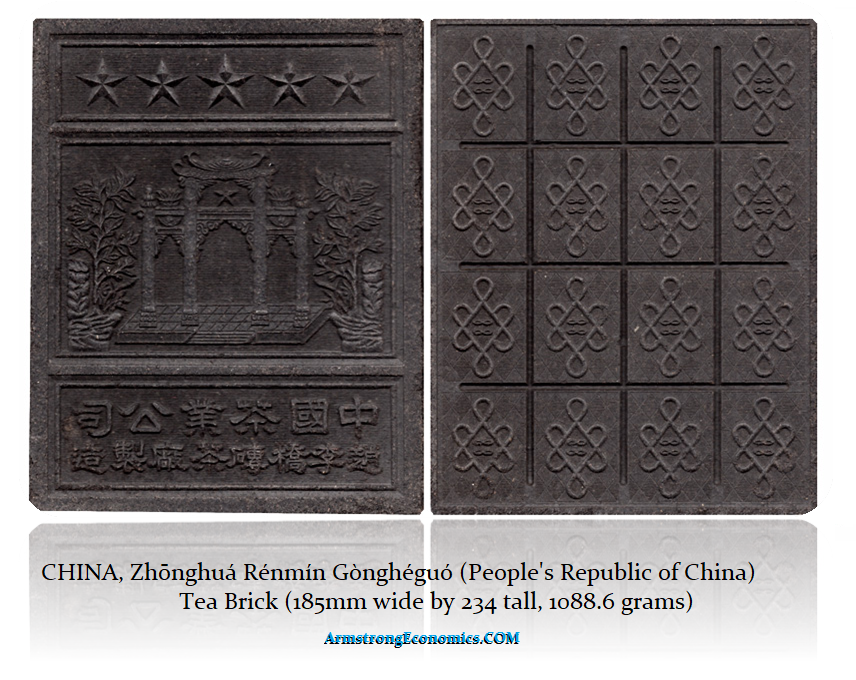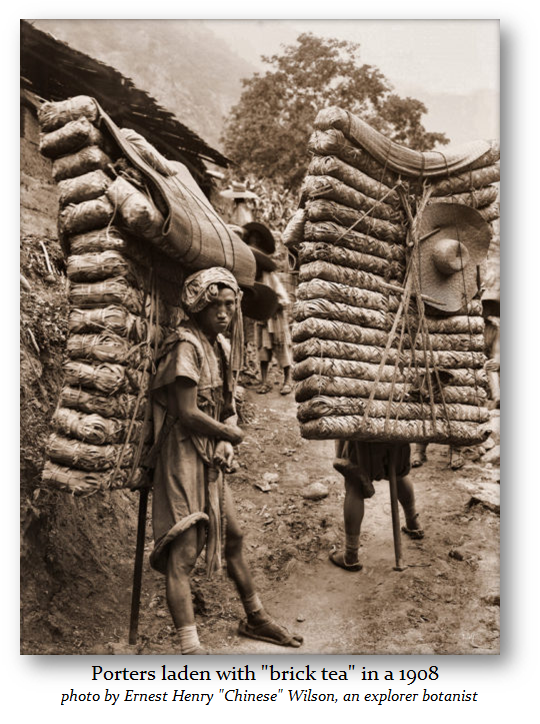Many have heard the saying: “I wouldn’t go there or do something for all the tea in China.” While some assumed this referred to some huge quantity, it actually stems back in time to a value similar to gold or metal used for money. Where metal had some utility value, such as bronze, which could be fashioned into tools or weapons, tea could be compressed into bricks, crumbled, and drank. The Russian nobility loved tea, as did the English. There was a viable commercial trade in tea that most likely may have been a competitor to silk in trade with the Russian nobility. Tea was considered to be a very valuable commodity in trade.
We know that dried leaves of tea were transported from China to Russia by caravans of camels over the Silk Route. Someone discovered that tea could be compressed into bricks, providing a much more convenient commodity for transportation. Like gold, which also began as a prized possession for the nobility in Egypt, tea bricks became an accepted medium of exchange because of their value. Tea became a recognized form of money in domestic and foreign trade. It was said that 20 tea bricks would purchase a horse, and 12 bricks would buy a sheep. The tea also had an advantage over metals and salt. Tea could be used as money and eaten as food in times of hunger. In addition, tea was brewed as a beneficial medicine for treating coughs and colds. It was still used as money until World War II.
Like salt, which is also often traded in brick form, tea also became an imperial monopoly, It has long remained as a currency between China and Tibet. Sulaimān at-Tājir became a famous 9th-century Muslim merchant and author originally from Siraf in modern-day Iran. He traveled to India and China and wrote an account of his voyages around 850 AD. He is mostly known for his travels to China. He wrote concerning it :
“Among the things that China produces in abundance the King reserves the monopoly of salt and of a herb dried that the Chinese drink in hot water. The dried herb is sold in all the towns for enormous sums. It is called sah. It has more leaves than the trefoil, it is a little more scented than that, but has a bitter taste. Water is boiled and poured over this herb, the infusion makes an antidote against all indisposition.” (Ferrand, 1922, p. 58).
CHINA, Zhōnghuá Rénmín Gònghéguó (People’s Republic of China), Tea Brick (185mm wide by 234 tall, 1088.6 grams) was made by the Yangloadong Brick Tea Factory. Here, the design displays an ornate arch flanked by trees; five stars above; below, Zhongguo Chaye Gongsi/ Yanglaodong Zhuancha Chang Zhizao (China National Tea Corporation/ Made by the Yanglaodong Brick Tea Factory) in Hànzì characters / Sixteen segments. Mitchener 4144; Opitz p. 338-40.
From the late 17th to the mid-20th century, tea was commonly pressed into bricks for trade in Russia and Tibet., where they frequently functioned as currency. The quality of this tea varied from pure ground leaves for the best bricks and dust stems and soot for the lesser brands. These bricks proved so crucial to the Tibetan economy that, in the build-up to the Chinese invasion of the country in 1950, the Communist government purchased all available tea bricks, severely disrupting Tibetan monetary exchange.






